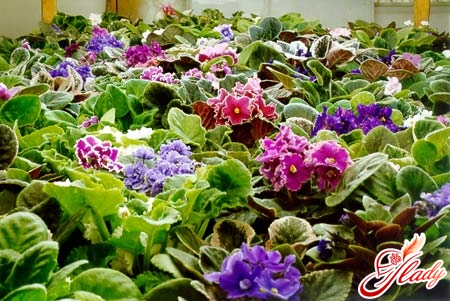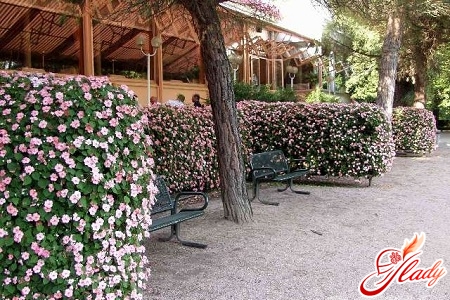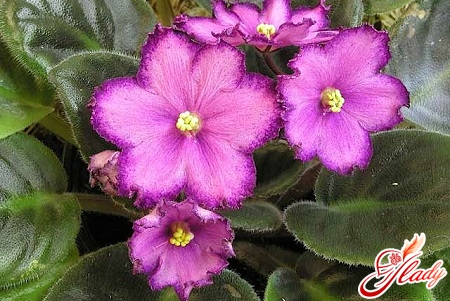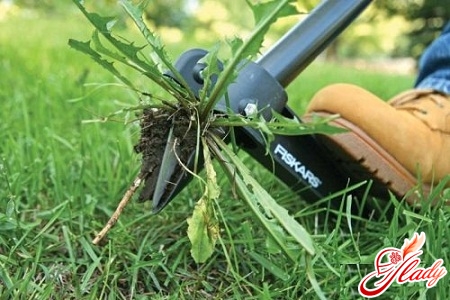 The indoor orchid is considered to be quite capricious.plant. But this fact does not prevent amateur gardeners from growing it. Yes, they sometimes make mistakes, get confused in all the intricacies of caring for a tropical beauty, but, as they say - "patience and work will grind everything." This statement best reveals the principles of growing orchids. And if you decide to join the club of lovers of this plant, be prepared for various difficulties. In this article, we will try to help novice gardeners and pay attention to the most important problem that occurs in orchids - root rot. If you do not take timely measures to eliminate this trouble, the plant will get sick and die. Why do the roots get sick? Is it possible to save an orchid? If you want to get answers to these questions, carefully study our tips and recommendations.
The indoor orchid is considered to be quite capricious.plant. But this fact does not prevent amateur gardeners from growing it. Yes, they sometimes make mistakes, get confused in all the intricacies of caring for a tropical beauty, but, as they say - "patience and work will grind everything." This statement best reveals the principles of growing orchids. And if you decide to join the club of lovers of this plant, be prepared for various difficulties. In this article, we will try to help novice gardeners and pay attention to the most important problem that occurs in orchids - root rot. If you do not take timely measures to eliminate this trouble, the plant will get sick and die. Why do the roots get sick? Is it possible to save an orchid? If you want to get answers to these questions, carefully study our tips and recommendations.
Causes of the problem
Insufficient lighting and increased humidityСтроение корневой системы орхидей довольно сложное. У эпифитных растений отсутствуют корневые волосики, через которые цветок получает влагу. Верхний слой корня называется веламен. Он состоит из пустотелых клеток, образующих несколько слоев. Вода попадает сюда по капиллярам и может перекачиваться из одного слоя клеток в другой, пока не достигает следующего, активно принимающего участие в процессе, – экзодермы. Отсюда вода двигается в сторону середины корня и затем наверх — к листьям. И для того чтобы осуществился переход воды из веламена в экзодерму, необходимы специальные условия, а именно – определенное освещение. Если говорить коротко, то чем ярче солнечный свет, тем активней растение потребляет воду. Чаще всего столкнуться с проблемой загнивания корней можно в период с ноября по март. Именно в это время в нашем регионе ощущается явный недостаток солнечного света: идут дожди, снег, да и день слишком короткий. А на родине орхидея практически никогда не испытывает недостатка в солнце. Так вот, когда солнечного света явно не достаточно, вода остается в верхнем слое и просто ждет удобного случая. Если корни находятся в хорошо проветриваемом субстрате, то какая-то часть влаги испарится естественным образом, но еще часть все равно останется и может послужить причиной загнивания. Грибковые заболевания корневой системы Грибки-паразиты чаще всего атакуют именно корни орхидей. Все они не представляют опасности до тех пор, пока растение здорово. Но, как только цветок начинает испытывать недостаток солнечного света и избыток влаги – появляется толчок к грибковой атаке. Разлагающийся слой (веламен) создает идеальные условия для размножения грибков, и уже через несколько часов их будет достаточно, чтобы начать разъедать корневую систему. Когда корни полностью повреждены, грибки принимаются за стебель и листья растения. Важно не допустить размножение грибковой инфекции и своевременно начать лечение, иначе спасти орхидею будет невозможно. Уплотнение субстрата Ни один субстрат не может вечно снабжать растение нужными веществами. Со временем он теряет главное свое свойство — воздухопроницаемость. Как только грунт уплотняется, корни орхидеи не получают достаточно кислорода. А это (даже при условии хорошего освещения) может послужить причиной загнивания, ведь воздух необходим для продвижения воды. Уплотнение субстрата может также происходить из-за чрезмерного полива и размножения водорослей в грунте. Иногда этому способствуют живущие в субстрате вредители, которые могут разъедать кору, тем самым содействуя уплотнению грунта. В данном случае спасти орхидею поможет только пересадка. Избыток удобрений и механические повреждения У орхидей корни очень чувствительны к удобрениям, особенно к калийным и фосфорным солям. И если использовать слишком концентрированные подкормки, корневая система получает сильнейший ожог и уже не может нормально выполнять свою функцию. Чтобы спасти орхидею, отмените удобрение и пересадите растение в свежий грунт. Корни можно повредить и при пересадке растения. Достаточно сделать небольшой порез или целенаправленно обломать поврежденный участок — он уже не способен выполнять свою функцию и постепенно загнивает. Опасность заключается в том, что гниль со временем распространится по всем корням. В итоге – гибель корня и гибель растения. 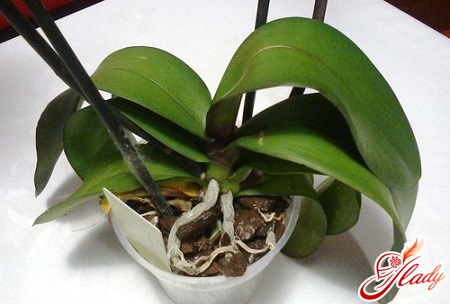
What to do?
How to save an orchid when its roots rot?It is very easy to find out that your plant has a problem with the root system. Firstly, it does not hold firmly in the soil. Secondly, the orchid leaves become flabby and begin to turn yellow, and eventually completely wither. Look at your plant - is there at least one of the above signs? One affirmative answer is enough to understand - the plant may die. But do not worry ahead of time, you can save the orchid. The main thing is to start acting immediately. The plant must be removed from the pot and the root system must be thoroughly washed, removing all rotten and damaged roots along the way. At this stage, you may encounter another problem: how to distinguish dead roots from living ones? Rotten orchid roots are slimy and hollow to the touch. If you press on them, liquid will flow and the core of the root will be exposed, similar to a thin thread. Damaged areas have a dark shade - from brown to black. Live roots are hard and dense to the touch, regardless of color. When dry, they have a light green or silver tint. The roots of an old plant may have a light brown color. If you find that only part of the root is affected, you just need to cut off the rotten area to healthy tissue. The cut must be disinfected (for example, sprinkle with activated carbon or treat with any antiseptics that do not contain alcohol). It is better not to use iodine or brilliant green, because these drugs dry out the roots too much. But we need to save the orchid, and not completely destroy it. If you find damage to the root only at the base, then most likely this is the "work" of a fungal infection. But even in this case, you can save the orchid. It is necessary to completely remove the affected root and, as a preventative measure, soak the plant in a solution of any fungicide for 15-20 minutes. Further actions will depend on whether the plant has living roots left. If yes, it is recommended to transplant the flower into a small diameter pot and place it in a warm and bright place (just not under direct sunlight). The plant should be watered as the substrate dries out completely.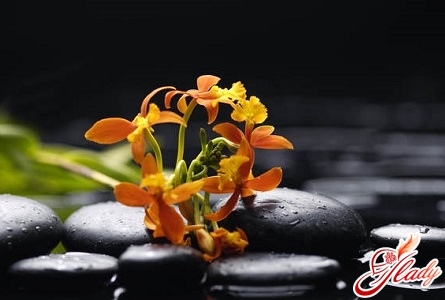
How to save an orchid if there are no living roots left
If you don’t have living roots on the plant,found - this is not a reason to give up. It is still possible to save the orchid in this case, although it is quite difficult. First, you need to prepare the plant: cut off all the rot and remove all the dead parts. After that, the flower is placed in a special container with water (plastic, glass or ceramic). The main thing is that the container does not have holes. For example, you can use a regular glass cup, place the plant in it, pour warm filtered water (so that only the part of the flower where the roots once were) is covered and leave it in a light place. To save the orchid, choose a room where the air temperature is 25-27 degrees. The water must be changed daily (use filtered and warm), the plant must be well dried. To save the orchid, try to prevent the leaves from coming into contact with water. Otherwise, another problem will arise - rot in the form of dry spots. By the way, the process of rooting can be accelerated by adding glucose to water in the form of honey or sugar (at the rate of 1 teaspoon per 1 liter of water). This is how you can save the orchid. The duration of resuscitation will depend on the initial state of the plant and the conditions in which it grew. The appearance of new roots is possible in 3 weeks or in six months. It is difficult to name the exact date. But the better the lighting is chosen, the faster you can save the orchid. You can transplant the plant into the soil when the roots reach 3-4 centimeters in length. At first, the diameter of the pot should be very small so that the soil can dry well after watering. If the flower is unstable, it is necessary to fix it. Try carefully wrapping the plant with threads, as if tying it to the pot. Or stick sticks into the soil and fix the position of the orchid. When it takes root well (in 2-3 weeks), the support can be removed. Well, that's all. Now you know how to save an orchid if its root system is damaged. The main thing is to adjust the ratio between watering and lighting, and let such problems pass your beauty by.




